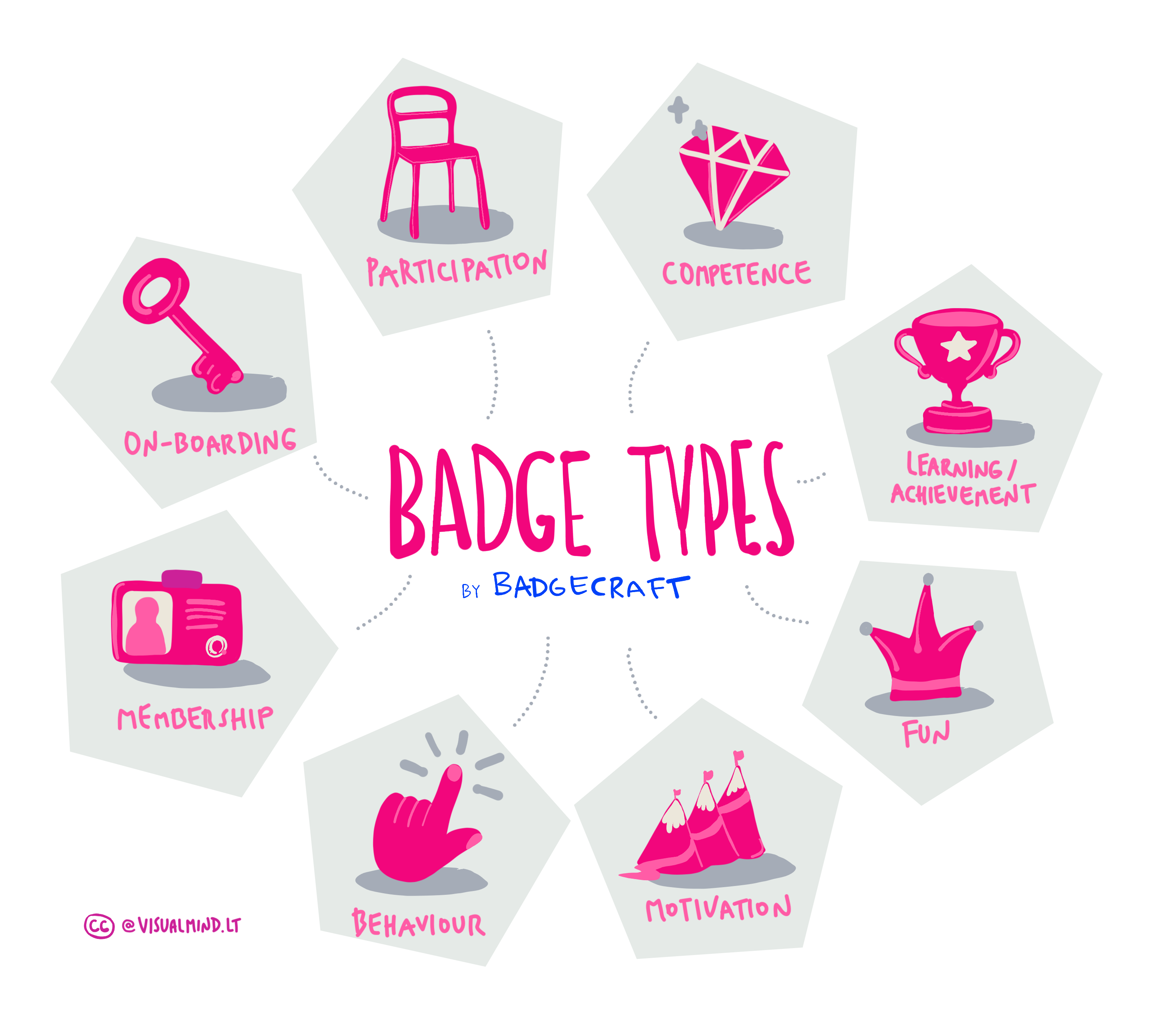1
Choosing badge issuing method
Choosing badge issuing method
Content
Badges may be of many types and be used for various goals.
Depending on the badge type and your goals, you will need to choose the suitable issuing method. This activity will offer you several badge-issuing options to consider and set how earners will earn badges.
Before using badges, you will need to select from several different issuing methods. The best method depends on the badge using objectives, the nature of the activity, the number of learners, and the level of verification required.
First, consider your badge objectives. Review various badge types and identify the badges you will offer to your learners and participants. Consider the following:
- What goals do you want to achieve with specific badges?
- How do badges integrate into the learning journey?
- How do badges relate to one another - badge system approach?

Issuance methods and when to use them
There are several ways to choose the badge issuing settings.
- Direct issuing via email:
This is a manual process where an issuer awards a badge directly to a learner. This can be done by entering the learner's email (or bulk emails) directly from the platform's badge-issuing form (see the help article on how to issue badges). This method is often used when there is no need for an assessment, participation is verified in person or through online presence, or involves a small group.
Most suitable for: workshops, one-on-one mentoring, and volunteering projects where an activity or experience organiser can manually verify participation or completion of activities.
Example from practice: After a mentoring session, a mentor goes onto the Cities of Learning platform and awards a "Mentorship Completion" badge to their mentee.
- Giving a badge-earning link or QR code:
Every badge has a unique badge-earning link and a QR code that learners can use to claim their badge (view the help article on how to issue badges). This is a very flexible method that works well for large groups and is often the easiest way of issuing.
Most suitable for: Large-scale events, conferences, or workshops where you want to allow attendees to claim a badge on their own device. Or to issue badges to people who have lower digital skills, or are starting to use badges for the first time. In the last case, it’s pretty often getting to know badges and therefore making it as easy as possible to earn a badge.
Example from practice: At the end of a youth festival, a QR code is displayed on a screen. Attendees can scan the code to claim a "Festival Participant" badge.
Example from practice: A person with a digital skills gap can, with their Badge Wallet app or mobile camera, scan a QR code to claim a ‘digital learner’ badge.
- Earning a badge by completing tasks:
The earner can complete pre-assigned badge tasks, and once the issuing criteria are met, the badge is issued to the learner. Badge earners must submit evidence (view the help article on how to submit badge evidence), which may require verification by activity members or organisers (view the help article on how to approve badge evidence). At the Cities of Learning platform, when creating a badge, the issuer can choose if the assessment will be done by the earner themselves, a peer, or someone from the organisation. The badge indicates who assessed the evidence.
Most suitable for: Learning activities that require assessment, such as completing a task in a project, writing a reflection, or uploading a picture of something that they have created.
Example from practice: A learner reflects on their learner's journey and writes a summary of the reflection as evidence. When the submit button is pushed, the badge is issued because the issuing organisation considers self-assessment a critical skill for lifelong learning and a valuable method.
Example from practice: A learner in their first year of college shares how they worked on a group task, the peers in the group check if they recognise what the learner has written and issue the badge to the learner.
Example from practice: A learner submits a short video showing their public speaking skills. A badge assessor (youth worker, teacher, employer, …) reviews the video and awards the "Public Speaking" badge once the evidence is verified.

Get activity badge
Badge Issuing Methods Get this badge
This badge serves as evidence of my enhanced understanding of various badge-issuing methods. Now, I know how to select a suitable badge issuing method and configure the issuing settings.
To earn this badge, I had to explain the selection of the badge issuing method and how it suits our objectives and activities. Optionally, I shared an example of a badge with the badge issuing settings.
This badge is issued as part of the online course leading to the achievement of the Badge Quality Label.
Tasks
Task no.1
Evidence verified by: one activity organiser
Consider your badge objectives, activities and learner profiles and complete the following tasks to earn this badge:
- Review the visual with badge types and explain which 2-3 badge types you will be issuing, as well as how they align with your badge use objectives.
- Explain which badge issuing methods are most suitable for your specific badge use cases and how they fit your activities and learners' profiles.
Optional: Upload a screenshot with badge earning settings or a link to a publicly available badge accessible on the platform.
Organisers
Cities of Learning Network
Badge issuer recognized with
Awero not-for-profit organisation manages this platform and develops it together with leading educational organisations. The European Union's programme Erasmus+ granted co-funding for building the first version of this platform. Contact support@awero.org.
Platform
Change to another language:

